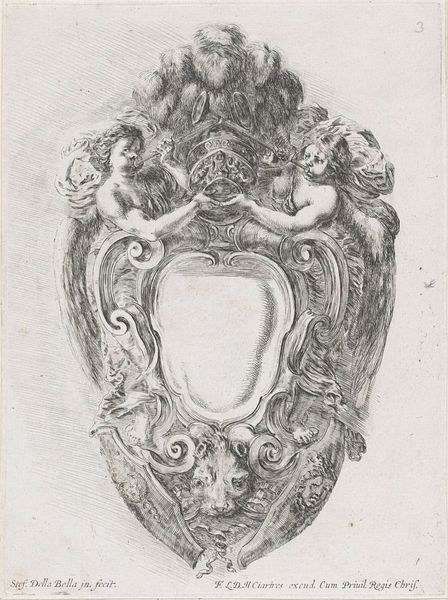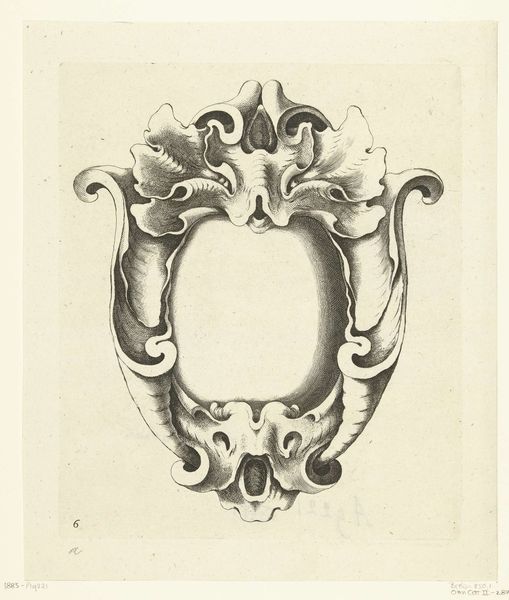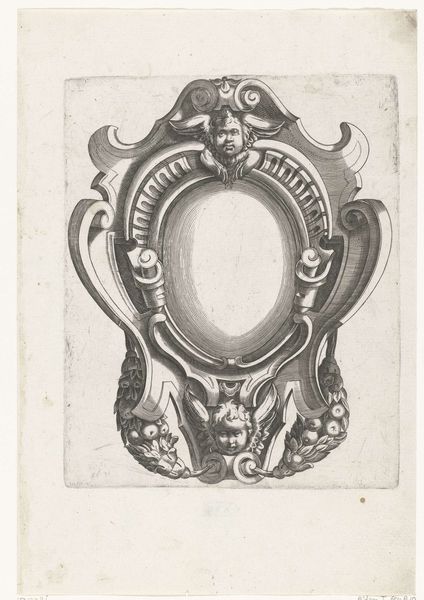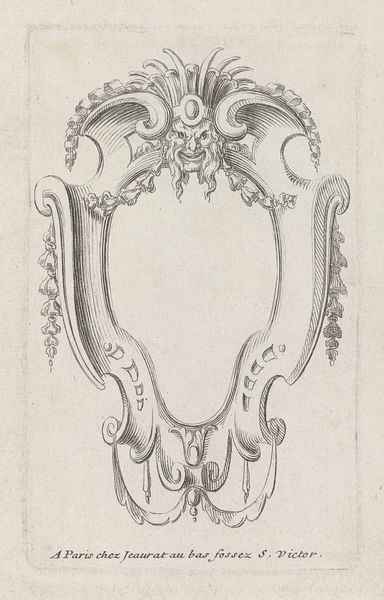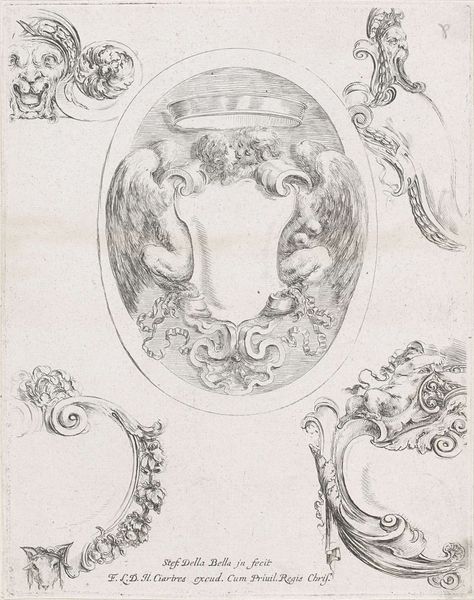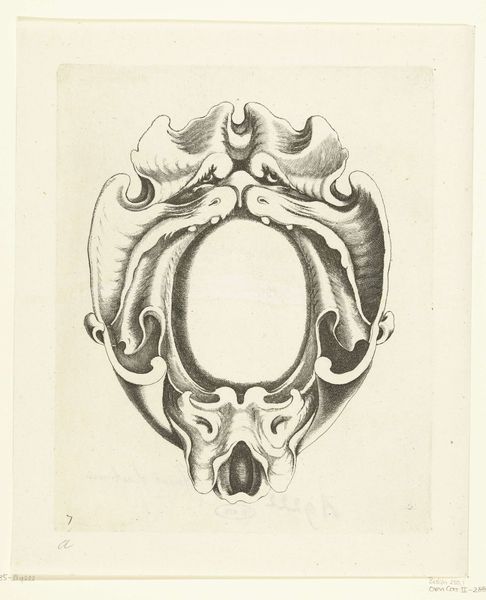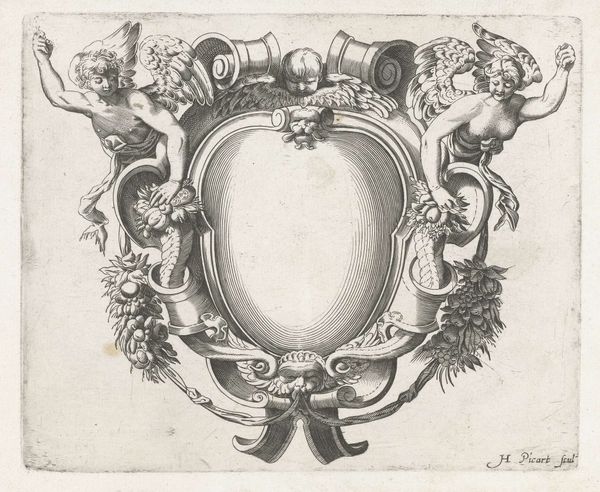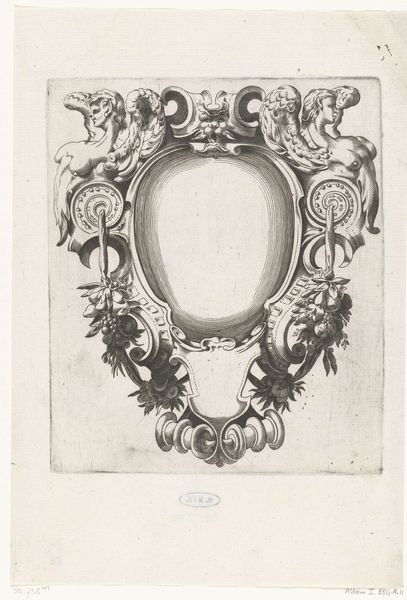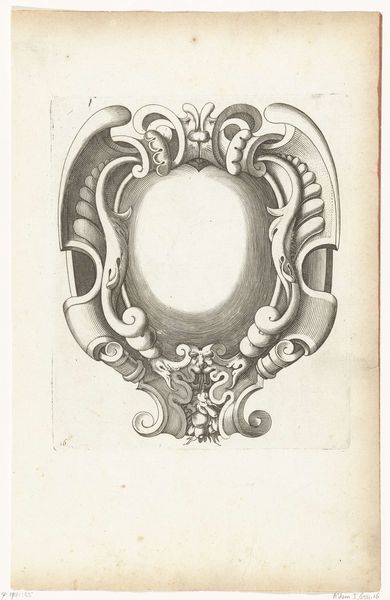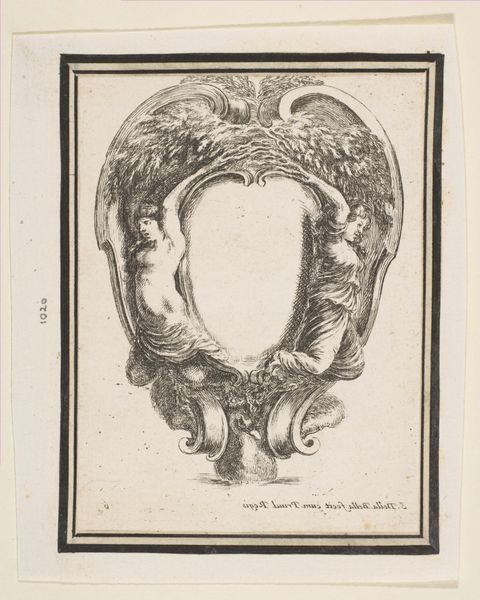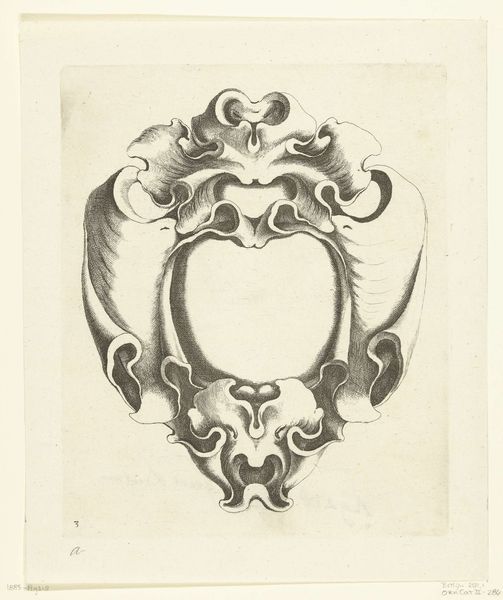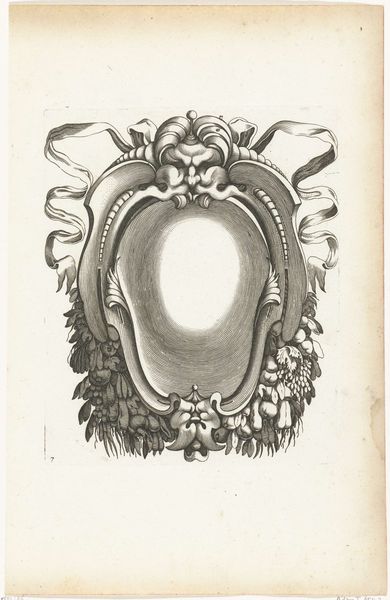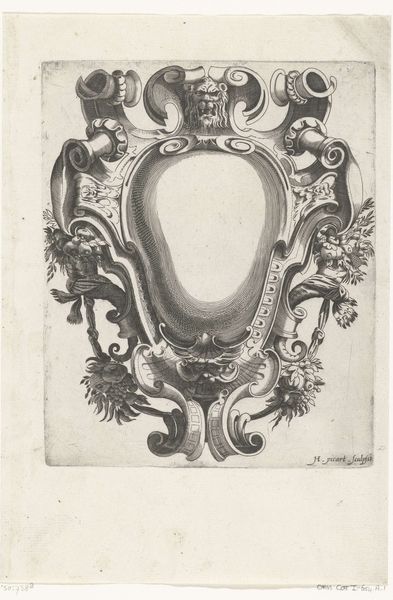
Cartouche met twee leeuwen, een os en een schedel van een ram 1646
0:00
0:00
print, etching
#
allegory
#
baroque
# print
#
etching
Dimensions: height 235 mm, width 189 mm
Copyright: Rijks Museum: Open Domain
Stefano della Bella made this print, "Cartouche with two lions, an ox, and a ram's skull" in the 17th century. It's an etching, meaning the artist used a metal plate covered in wax, drew into the wax to expose the metal, and then bathed the plate in acid. The acid bites into the exposed lines, creating grooves that hold ink. You can see the quality of line that this process allows, from the bold outlines of the cartouche itself, to the fine hatching that gives depth to the lion's manes, the ox's fur, and the ram's skull. The print is all about surface effects, the contrast of dark and light, the play of textures. Prints like this were relatively easy to produce, and relatively inexpensive to buy. So, it's an artwork made using a process that allowed for wider distribution, contributing to the rise of a visual culture available to a broader public. Etching allowed for a democratization of images, ideas, and aesthetics, bringing art to people beyond the aristocratic elite.
Comments
No comments
Be the first to comment and join the conversation on the ultimate creative platform.
